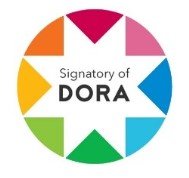Ethics and Education for a Culture of Peace
DOI:
https://doi.org/10.59654/ym5qva48Keywords:
Ethics, education, culture of peace.Abstract
In the following article an analysis is made of Ethics and Education for a Culture of Peace. In peace education there are two very important intertwined concepts: human rights and justice. For this reason, emphasis is placed on educating children and young people in formal and informal education. Hence, there is an interest in including peace education in the curricula. For this reason, the United Nations has developed the Programme of Action for a Culture of Peace, and efforts have been made to implement it and to teach how to solve conflicts, war, violence, terrorism, gender exploitation, to combat environmental damage and to oppose everything that is contrary to life and human dignity. But the task is not an easy one to take on because it necessarily requires a multidisciplinary effort to
achieve this through education. This is the subject of the following
Downloads
References
Abreu, S. A. (2017). La Ética en la Investigación Educativa. Instituto Internacional de Investigación y Desarrollo Tecnológico Educativo INDTEC, C.A. Revista Scientific, 2(4), 338-350.
Arismendi, P. O. (1997). Formación ética en la educación. Educación y Educadores; Vol 1,33-36. Universidad de La Sabana https://educacionyeducadores.unisabana.edu.co/index.php/eye/article/view/440
Brenes-Castro, A. (2004). An integral model of peace education. En: Wenden, L. (ed.), Educating for a culture of social and ecological peace. State University of New York, 77-98.
Centro de Comunicación Educativa Audiovisual (Cedal, 2013). Educación para la Paz. Cartilla Metodológica 8, 23.
Galtung, J. (1996). Peace by peaceful means. Peace and conflict, development and civilization PRIO, 46-52.
García, R. L., Monserrat, A. De Nicolás., Mercè, P. V. y Boqué, T. M. C. (2013). La construcción de la paz mediante la educación. Hacia el diseño de un instrumento de indicadores. Revista Perspectivas Educativas, 6(6), (enero-diciembre), 33 - 56. https://www.google.com/url?sa=t&rct=j&q=&esrc=s&source=web&cd=&cad=rja&uact=8&ved=2ahUKEwjVk8Gx_5-BAxXckWoFHU7YD-AQFnoECCEQAQ&url=https%3A%2F%2Frevistas.ut.edu.co%2Findex.php%2Fperspectivasedu%2Farticle%2Fview%2F349&usg=AOvVaw08a_t7mbEFQZW5yeop1tx3&opi=89978449
Hutchinson, F. P. (1996). Educating Beyond Violent Futures. Routledge.
López, M. H. (2011). Teorías para la paz y perspectivas ambientales del desarrollo como diálogos de imperfectos. Luna Azul 33, 85-96. https://www.google.com/url?sa=t&rct=j&q=&esrc=s&source=web&cd=&cad=rja&uact=8&ved=2ahUKEwjJ5azN_5-BAxU3lmoFHagfBBcQFnoECBYQAQ&url=https%3A%2F%2Frevistasojs.ucaldas.edu.co%2Findex.php%2Flunazul%2Farticle%2Fview%2F1203&usg=AOvVaw39ctTK2ltT4LCop66xfVqM&opi=89978449
Muñoz, F. A. (2004). Paz imperfecta, en Paz imperfecta. Eds. Mario López, et al. Enciclopedia de Paz y Conflictos. Edición especial. Tomo II, (Granada: Editorial Universidad de Granada, 2004), 36.
Muñoz, F. A. y Molina, B. (2010). Una cultura de paz compleja y conflictiva. La búsqueda de equilibrios dinámicos. Revista Paz y Conflictos 3, 44-61.
Negri, A. y Goodbye, M. R. (2007). La crisis de la izquierda y los nuevos movimientos revolucionarios. Ediciones Paidós.
Organización de las Naciones Unidas. (2015). Objetivos de desarrollo sostenible. 17 objetivos para transformar nuestro mundo. http://www.un.org/sustainabledevelopment/es/peace-justice/.
Sánchez, A. (2009). Introducción a la ética y a la crítica de la moral. Vadel Editores.
Downloads
Published
Issue
Section
License
Copyright (c) 2022 Revista Digital de Investigación y Postgrado

This work is licensed under a Creative Commons Attribution-NonCommercial-ShareAlike 4.0 International License.
Esta licencia permite a los reutilizadores distribuir, remezclar, adaptar y desarrollar el material en cualquier medio o formato únicamente con fines no comerciales, y solo siempre que se atribuya al creador. Si remezclas, adaptas o construyes sobre el material, debes licenciar el material modificado bajo términos idénticos. CC BY-NC-SA incluye los siguientes elementos:
![]() POR: se debe dar crédito al creador.
POR: se debe dar crédito al creador.![]() NC: Sólo se permiten usos no comerciales de la obra.
NC: Sólo se permiten usos no comerciales de la obra.![]() SA: Las adaptaciones deben compartirse en los mismos términos.
SA: Las adaptaciones deben compartirse en los mismos términos.











